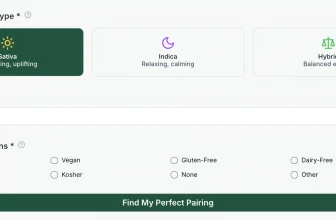
Rosé wine has come a long way in the last couple of decades. Way back in the ’70s and ’80s, rosés were considered cheap and unappealing. Long ignored by connoisseurs who turned their noses up in favor of the more traditional varieties which typically command famous wine-drinking regions, this refreshing grape elixir is more recently enjoying a reversal of fortune.
Hooray for Rosé! Everything You Need to Know About This Amazing Type of Wine
Where once rosé wine wasn’t considered as worthy of respect, more and more wine lovers are taking the complex and crisp flavors they have to offer very seriously. In the United States, the popularity of this pinkish-hued vino has skyrocketed. And to be honest, many folks aren’t too familiar with this peculiar potion. So let’s take a look at this remarkable beverage and all the ways it can bring pleasure to your lips.
Rosé Wine Origins
There’s a good chance that the very earliest wines were, in fact, rosés. And this all has to do with the fundamentals of winemaking itself. When wine grapes are crushed, the spilled juice spends a certain amount of time in contact with the grape skin. This process is called maceration. Darker reds tend to extend the maceration time, allowing those red tones to seep more deeply into the wine.
When it comes to rosé, however, maceration only lasts a day or two. This results in the lighter pink-to-white coloring which we are accustomed to seeing in the glass. Ancient winemakers tended to favor those lighter-colored wines, feeling the darker ones were too harsh. Additionally, wine pressing technology was less precise, making it harder to control the qualities of the darker wines. Hence, rosé was more than likely the most popular wine back in the day!
Things Getting Rosier
Once winemaking became more sophisticated as the technology evolved, winemaking regions like those in France began crafting more pronounced reds such as Bordeaux, which would become legendary. Oenophiles would talk of tannins and those deep red tones when it came to red grape wines. And so, for a few centuries, rosés would take a back seat to these more popular styles.
But then, after World War II, something unexpected happened. A pair of Portuguese winemakers, Mateus and Lancers, burst onto the European wine market scene. Seemingly overnight, these companies saw sales of their refreshing and easy-drinking rosés soar. But that easygoing quality also led to the aforementioned snobbery, which stymied folks from taking them seriously. Nowadays, we are in a rosé renaissance, thanks partially to regions like California producing their own brands.
What Makes a Rosé Wine a Rosé?
As already mentioned, limiting the maceration period is crucial to the rosé making process. The skins must be separated quickly so as not to push the flavor profile too far. And here’s the amazing thing: any red grape can produce a rosé! That means that you will find familiar varietals which you already know and love are, in fact, the very same grapes behind these lighter wines that are making waves.
Think about common names in wine-loving circles like Pinot Noir, Sangiovese, and Syrah, which produce some of the most coveted bottles around the world. Those and several other famous varietals are used to make rosés. And almost always, they come from a blend of several of these varietals. Unlike most red and white wines, single-varietals are not the norm. But then again, there are more types of rosés than you can shake your wine flute at!
Old vs. New
When we speak of rosés, one easy way to classify the different types is to divide them between Old World and New World. As with many other wine grapes, Old World rosés are grown from very old vines in Europe — we are talking centuries old! Grown in select regions like France’s Provence, these tend to be very dry. Dry rosés tend to be favored by the wine-drinking market at parge, and growing conditions in the Old World lend themselves to said dryness.
New World rosés come from many places, but predominantly the West Coast of the United States, New Zealand, and Chile. Because the vines are not nearly as old and the growing conditions have their own characteristics, these wines tend to be fruitier and sweeter. That’s not to say that you can’t see a wide range of flavor profiles emerging from the New World. Just think of this as a rule of thumb when choosing rosés.
Of Wines and Rosés
Just as it is with fine spirits like Cognac, rosés demand close attention to find the best of the bunch. So getting to know more about the different varieties is key if you want to get in on the action! Grape varietals are where it all starts. Grenache rosés are incredibly fruity with notes of orange and strawberry. Provence rosé is super crisp, offering a refreshing slight pucker that will leave hints of rose petals dancing on your lips. If you want to lean hard into sweeter stuff, seek out Pink Moscato rosés.
As for the wineries themselves, here are a few to try out when touring California wine country. Dutton-Goldfield makes a briny entry up on the Northern Coast. Marietta Cellars boasts older vines with a special saltiness to the final product. And Ram’s Gate on the Sonoma Coast makes a lovely tart rosé that will remind you of rhubarbs.
Down to the Last Drop
When it all comes down to it, if you already love red and white wines, there’s no reason you can’t find a great Rosé to enjoy as well. Now that you have an idea of what to look out for, get ready to chill out with some chilly glasses of these remarkable vinos. It’s a whole other way to treat your palate to the pleasures of the elixirs these sublime grapes yield. Rosés are totally cool and trendy now, so you may as well join the same kind of bandwagon that brought you to whiskeys and IPAs!






